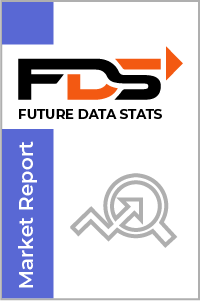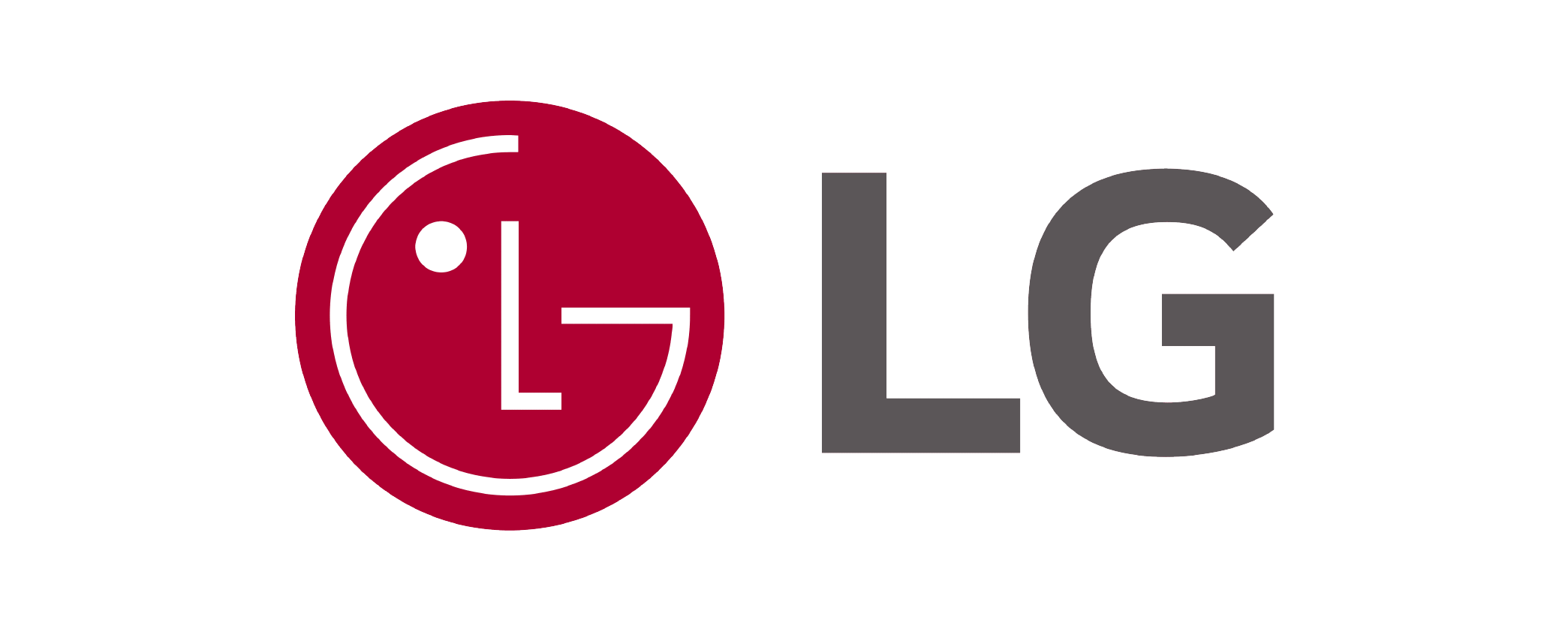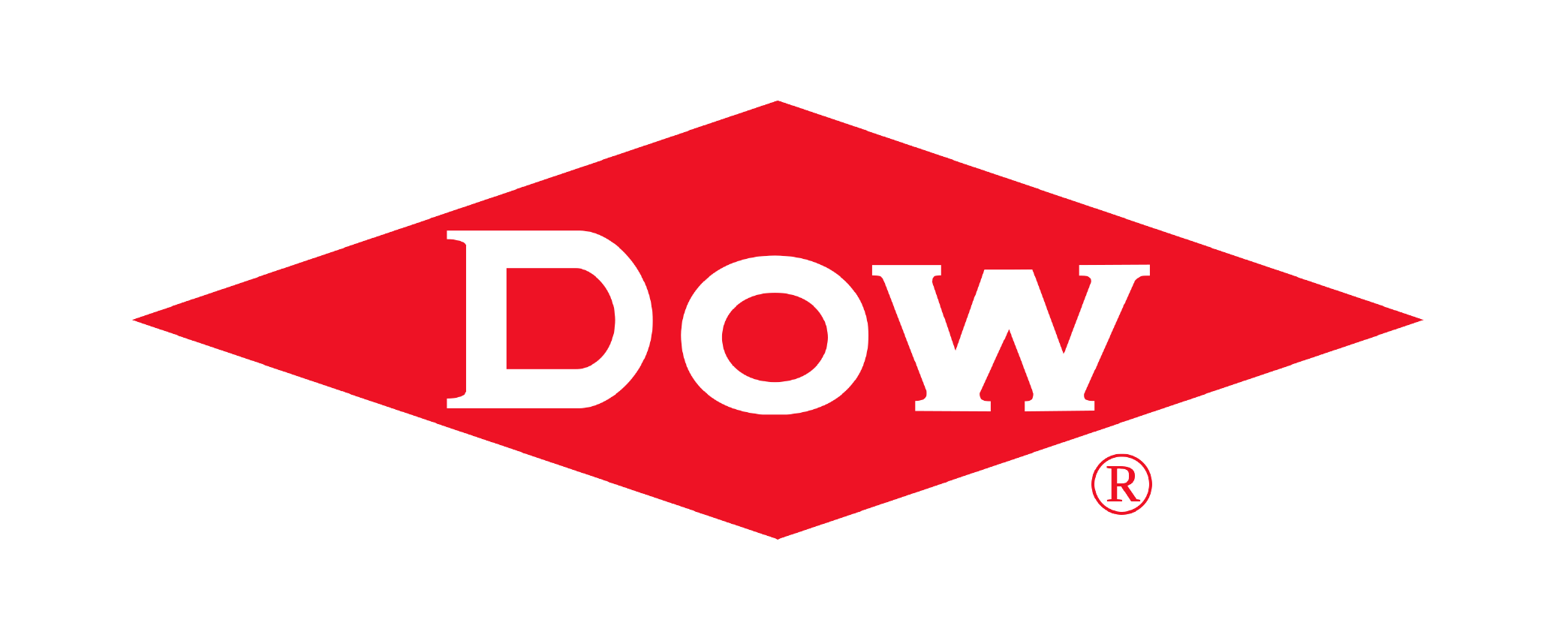The global Circular Economy Market size was valued at USD 450 Billion in 2024 and is projected to expand at a compound annual growth rate (CAGR) of 11.5% during the forecast period, reaching a value of USD 1000 Billion by 2032.
The "Circular Economy Market Research Report" by Future Data Stats provides an in-depth examination of the market landscape, utilizing historical data from 2021 to 2023 to identify key trends and growth patterns. Setting 2024 as the foundational year, the report explores consumer behavior, competitive forces, and regulatory frameworks that influence the industry. It transcends basic analysis, delivering a thoroughly researched forecast extending from 2025 to 2033. By employing sophisticated data analysis methodologies, the report not only outlines the market's growth trajectory but also uncovers emerging opportunities and foresees potential obstacles, empowering stakeholders with vital insights to adeptly navigate the changing market landscape.
MARKET OVERVIEW:
A circular economy focuses on minimizing waste and maximizing resource efficiency by reusing, recycling, and repurposing materials. Businesses adopt this model to reduce environmental impact and improve sustainability. By extending the life cycle of products, companies lower production costs and create long-term value. Market demand for circular economy solutions is growing as industries shift toward sustainable practices. Companies invest in eco-friendly innovations, such as renewable materials and waste management strategies, to meet regulatory requirements and consumer expectations. This approach supports economic growth while preserving natural resources.
MARKET DYNAMICS:
Businesses are adopting circular economy strategies to reduce waste and improve resource efficiency. Companies are shifting from single-use materials to recyclable and biodegradable alternatives, promoting sustainable manufacturing. Many industries are investing in product-as-a-service models, where customers rent or return items for reuse instead of purchasing new ones. Governments are also introducing stricter regulations, encouraging businesses to embrace circular production and waste reduction practices. In the coming years, advancements in recycling technologies will enhance material recovery and create new market opportunities. More companies will integrate artificial intelligence to optimize supply chains and minimize resource consumption. Collaboration between businesses and policymakers will drive innovation in sustainable packaging and eco-friendly product design. As consumer awareness grows, companies will expand circular business models, ensuring long-term economic and environmental benefits.
Companies increasingly adopt circular practices to minimize waste and enhance resource efficiency, driven by consumer demand for environmentally responsible products. Innovations in recycling technologies and sustainable materials also play a crucial role, enabling businesses to create value from discarded materials. As awareness of environmental issues grows, more organizations see the circular economy as a pathway to not only reduce their ecological footprint but also improve their competitive advantage. Many businesses encounter difficulties in transitioning from traditional linear models to circular practices due to high initial costs and the complexity of redesigning supply chains. Additionally, a lack of regulatory frameworks in some regions can create uncertainty for companies looking to invest in circular initiatives. Nevertheless, significant opportunities exist for those willing to embrace change. By investing in research and development, collaborating with stakeholders, and engaging consumers, businesses can drive innovation and create new markets within the circular economy, ultimately contributing to a more sustainable future.
CIRCULAR ECONOMY MARKET SEGMENTATION ANALYSIS
BY TYPE:
The circular economy market is driven by the increasing demand for sustainable products. Companies focus on designing products that are easy to reuse, recycle, or repurpose, ensuring minimal waste generation. This approach not only reduces environmental impact but also lowers production costs, benefiting both businesses and consumers. Services in the circular economy market are gaining traction as companies offer waste management, recycling, and repair solutions. These services enable businesses to extend the lifecycle of their products and improve resource efficiency. With a growing emphasis on sustainability, services that support circular economy principles are becoming integral to various industries.
As awareness of the environmental benefits of circular practices rises, both products and services play key roles in market growth. The shift toward a circular economy creates opportunities for innovation, driving the development of new technologies and business models that promote sustainable practices across industries.
BY BUSINESS MODEL:
Companies increasingly adopt the Product as a Service (PaaS) model, offering rentals and subscriptions instead of one-time sales. This approach reduces waste and encourages manufacturers to design durable, reusable products. Businesses in sectors like electronics and automotive are expanding PaaS to create long-term customer value. Sharing platforms continue to grow, enabling individuals and businesses to maximize resource use. Ride-sharing, co-working spaces, and tool-sharing services reduce demand for new products while promoting cost efficiency. These models drive sustainable consumption and encourage collaborative ownership.
Industries focus on product life extension, resource recovery, and circular inputs to minimize waste and enhance sustainability. Refurbishing, remanufacturing, and recycling extend product lifespans, while circular inputs replace virgin materials with recycled alternatives. These strategies strengthen supply chains and create new revenue streams in a resource-conscious economy.
BY INDUSTRY VERTICAL:
The manufacturing industry is embracing circular economy practices by optimizing production processes and reducing waste. Companies are investing in energy-efficient technologies and designing products for easy recycling, helping to minimize resource depletion. This shift not only supports sustainability but also enhances operational efficiency. In consumer goods and retail, businesses are focusing on sustainable product designs and promoting reuse and recycling among consumers. By offering products made from renewable materials and encouraging take-back programs, companies are responding to increasing consumer demand for eco-friendly options. This transformation is reshaping the retail landscape and driving market growth.
The construction and building materials sector is adopting circular economy strategies by utilizing recycled materials and reducing construction waste. The food and agriculture industries are working towards minimizing food waste and implementing sustainable farming practices. Healthcare is also exploring circular models by promoting the reuse of medical equipment and reducing single-use plastics, contributing to both sustainability and cost savings.
BY ENTERPRISE SIZE:
Large enterprises are leading the adoption of circular economy practices by integrating sustainability into their operations. These companies have the resources to invest in advanced technologies, waste management systems, and product innovations that reduce environmental impact. By incorporating circular principles, they improve efficiency and meet growing consumer demand for eco-friendly products. Small and medium enterprises (SMEs) are also embracing the circular economy, though at a different scale. These businesses often focus on specific sustainable practices such as local recycling or product repair services. While they may face challenges like limited resources, many SMEs leverage their agility and innovation to create circular solutions that meet niche market needs.
Both large enterprises and SMEs are crucial to the growth of the circular economy market. Large enterprises set industry standards, while SMEs drive innovation and cater to localized demands. Together, they form a dynamic ecosystem, contributing to a more sustainable future.
REGIONAL ANALYSIS:
North America leads in circular economy initiatives as businesses and policymakers push for waste reduction and resource efficiency. Companies focus on advanced recycling technologies, while governments introduce stricter regulations to promote sustainability. The region also sees strong growth in product-as-a-service models, with industries such as electronics and automotive shifting to rental and refurbishment systems. Consumer awareness and corporate sustainability commitments continue to drive innovation in material reuse and eco-friendly production.
Europe remains at the forefront of circular economy adoption, supported by stringent environmental policies and ambitious waste reduction targets. Businesses invest in circular supply chains, integrating recycled materials into manufacturing processes. Sharing platforms and repair services gain popularity as consumers embrace sustainable consumption. Meanwhile, Asia Pacific, Latin America, and the Middle East & Africa witness growing interest in circular practices, with companies exploring resource recovery, remanufacturing, and biodegradable alternatives to reduce environmental impact.
MERGERS & ACQUISITIONS:
- In January 2024: Veolia (France) acquires RecycleTech Solutions (US), a startup specializing in AI-driven plastic sorting systems.
- In March 2024: Suez (France) merges with Nordic Recycling Group (Sweden) to expand circular waste management infrastructure in Scandinavia.
- In March 2024: Apple (US) finalizes acquisition of EcoRecover (Germany), an e-waste metal extraction startup.
- In May 2024: Rubicon Global (US) collaborates with Amazon to deploy blockchain-based tracking for reverse logistics and packaging reuse.
- In May 2024: Unilever (Netherlands/UK) acquires BioPack Innovations (Canada), a bioplastics manufacturer, to phase out single-use plastics.
- In July 2024: Circularity Capital (UK) invests $200M in GreenLoop Technologies (India), a circular agriculture and food waste-to-fertilizer startup.
- In July 2024: IKEA (Sweden) partners with HP Inc. (US) to create closed-loop furniture from recycled 3D-printed materials.
- In November 2024: Patagonia (US) launches ReThread, a circular textile recycling joint venture with H&M Group (Sweden).
- In November 2024: Nestlé (Switzerland) acquires ZeroWaste Packaging (France) to scale compostable and reusable food packaging solutions.
- In November 2024: Closed Loop Partners (US) merges with ReCircle (Singapore) to build Asia-Pacific’s largest circular economy investment fund.
- In November 2024: Tesla (US) partners with Redwood Materials (US) to establish a battery recycling megafactory in Nevada.
KEY MARKET PLAYERS:
- Patagonia
- IKEA
- Unilever
- H&M
- Cisco Systems
- IBM
- SAP
- Umicore
- Li & Fung
- Decathlon
- Grupo Bimbo
- Besix
- Samsara Eco
- Winnow
- Sims Lifecycle Services
TABLE OF CONTENT
1. GLOBAL CIRCULAR ECONOMY MARKET–REPORT OVERVIEW 17
1.1. SCOPE OF THE REPORT 18
1.2. MARKET SEGMENT ANALYSIS 19
1.3. REGULATORY SCENARIO BY REGION/COUNTRY 20
1.4. MARKET INVESTMENT SCENARIO STRATEGIC 20
1.5. MARKET ANALYSIS BY TYPE (USD MILLION) 21
1.5.1 GLOBAL CIRCULAR ECONOMY MARKET SHARE BY TYPE (2024-2031) 21
1.5.2 PRODUCTS 21
1.5.2.1 Recycled Products 21
1.5.2.2 Remanufactured Goods 21
1.5.2.3 Eco-designed Products 21
1.5.2.4 Modular Products 21
1.5.3 SERVICES 21
1.5.3.1 Waste Management 21
1.5.3.2 Repair & Maintenance 21
1.5.3.3 Resource Recovery 21
1.5.3.4 Leasing/Sharing Platforms 21
1.6. MARKET ANALYSIS BY BUSINESS MODEL (USD MILLION) 22
1.6.1 GLOBAL CIRCULAR ECONOMY MARKET SHARE BY BUSINESS MODEL (2024-2031) 22
1.6.2 PRODUCT AS A SERVICE (PAAS) 22
1.6.3 SHARING PLATFORMS 22
1.6.4 PRODUCT LIFE EXTENSION 22
1.6.5 RESOURCE RECOVERY 22
1.6.6 CIRCULAR INPUTS 22
1.7. MARKET ANALYSIS BY INDUSTRY VERTICAL (USD MILLION) 23
1.7.1 GLOBAL CIRCULAR ECONOMY MARKET SHARE BY INDUSTRY VERTICAL (2024-2031) 23
1.7.2 MANUFACTURING 23
1.7.2.1 Automotive 23
1.7.2.2 Electronics 23
1.7.2.3 Industrial Machinery 23
1.7.3 CONSUMER GOODS & RETAIL 23
1.7.3.1 Fashion & Apparel 23
1.7.3.2 Household Goods 23
1.7.3.3 Packaging 23
1.7.4 CONSTRUCTION & BUILDING MATERIALS 23
1.7.4.1 Modular Construction 23
1.7.4.2 Recycled Aggregates 23
1.7.4.3 Circular Design 23
1.7.5 FOOD & AGRICULTURE 24
1.7.5.1 Food Waste Management 24
1.7.5.2 Composting & Bioenergy 24
1.7.5.3 Circular Supply Chains 24
1.7.6 HEALTHCARE 24
1.7.6.1 Reusable Medical Devices 24
1.7.6.2 Waste-to-Energy Solutions 24
1.8. MARKET ANALYSIS BY ENTERPRISE SIZE (USD MILLION) 25
1.8.1 GLOBAL CIRCULAR ECONOMY MARKET SHARE BY ENTERPRISE SIZE (2024-2031) 25
1.8.2 LARGE ENTERPRISES 25
1.8.3 SMALL & MEDIUM ENTERPRISES (SMES) 25
2. DRIVER RESTRAINT CHALLENGE AND OPPORTUNITIES OF CIRCULAR ECONOMY MARKET 26
2.1. DRIVER, RESTRAINT, CHALLENGE AND OPPORTUNITIES ANALYSIS 26
2.1.1 MARKET DRIVER ANALYSIS 27
2.1.2 MARKET RESTRAINT ANALYSIS 27
2.1.3 MARKET OPPORTUNITY ANALYSIS 27
2.1.4 MARKET CHALLENGE ANALYSIS 27
3. GLOBAL GROWTH TRENDS 28
3.1. INDUSTRY TRENDS 28
3.1.1 SWOT ANALYSIS 28
3.1.1.1 Strengths 29
3.1.1.2 Weaknesses 29
3.1.1.3 Opportunities 29
3.1.1.4 Threats 29
3.1.2 PESTEL ANALYSIS 30
3.1.2.1 Political Landscape 31
3.1.2.2 Economic Landscape 31
3.1.2.3 Social Landscape 31
3.1.2.4 Technological Landscape 31
3.1.2.5 Environmental Landscape 32
3.1.2.6 Legal Landscape 32
3.1.3 PORTER’S FIVE FORCES ANALYSIS 33
3.1.3.1 Bargaining Power of Suppliers 34
3.1.3.2 Bargaining Power of Buyers 34
3.1.3.3 Threat of Substitute 34
3.1.3.4 Threat of New Entrant 34
3.1.3.5 Competitive Rivalry 35
3.2. VALUE CHAIN ANALYSIS 36
3.3. TRENDS BY REGION 37
4. POST COVID ANALYSIS 38
4.1. COVID-19 IMPACT ANALYSIS 38
4.2. COVID V ANALYSIS 39
4.3. COVID U ANALYSIS 39
4.4. COVID L ANALYSIS 39
4.5. COVID W ANALYSIS 39
5. COMPETITIVE LANDSCAPE 40
5.1. GLOBAL CIRCULAR ECONOMY MARKET, SALES AREA, BUSINESS MODEL 40
5.2. MERGERS & ACQUISITIONS, PARTNERSHIPS, PRODUCT LAUNCH, AND COLLABORATION IN GLOBAL CIRCULAR ECONOMY MARKET 41
5.3. COMPANY LIST IN THE GLOBAL CIRCULAR ECONOMY MARKET 42
5.4. STRATEGY FRAMEWORK 43
5.5. TOP COMPANIES MARKET SHARE (%), 2024 44
6. EXCEUTIVE SUMMARY 45
7. GLOBAL CIRCULAR ECONOMY MARKET FORECAST, 2020-2031, (USD MILLION) 46
7.1. GLOBAL CIRCULAR ECONOMY REVENUE AND MARKET SHARE BY REGIONS 46
7.2. GLOBAL CIRCULAR ECONOMY MARKET AND MARKET SHARE BY REGION (2020-2025) 51
7.3. GLOBAL CIRCULAR ECONOMY MARKET AND MARKET SHARE BY REGION (2026-2031) 53
7.3.1.1 North America 55
7.3.1.2 Europe 55
7.3.1.3 Asia Pacific 55
7.3.1.4 Latin America 55
7.3.1.5 Middle East & Africa 55
8. NORTH AMERICA CIRCULAR ECONOMY MARKET ANALYSIS BY COUNTRIES, (USD MILLION) 66
8.1. NORTH AMERICA CIRCULAR ECONOMY REVENUE AND MARKET SHARE BY COUNTRIES 66
8.2. NORTH AMERICA CIRCULAR ECONOMY MARKET AND MARKET SHARE BY COUNTRY (2020-2025) 67
8.3. NORTH AMERICA CIRCULAR ECONOMY MARKET AND MARKET SHARE BY COUNTRY (2026-2031) 69
8.3.1.1 United States 70
8.3.1.2 Canada 70
8.3.1.3 Mexico 70
9. EUROPE CIRCULAR ECONOMY MARKET ANALYSIS BY COUNTRIES, (USD MILLION) 77
9.1. EUROPE CIRCULAR ECONOMY REVENUE AND MARKET SHARE BY COUNTRIES 77
9.2. EUROPE CIRCULAR ECONOMY MARKET AND MARKET SHARE BY COUNTRY (USD MILLION) (2020-2025) 78
9.3. EUROPE CIRCULAR ECONOMY MARKET AND MARKET SHARE BY COUNTRY (USD MILLION) (2026-2031) 82
9.3.1.1 United Kingdom 85
9.3.1.2 Germany 85
9.3.1.3 France 85
9.3.1.4 Spain 85
9.3.1.5 Italy 85
9.3.1.6 Rest of Europe 85
10. ASIA PACIFIC CIRCULAR ECONOMY MARKET ANALYSIS BY COUNTRIES, (USD MILLION), (2020-2031) 98
10.1. ASIA PACIFIC CIRCULAR ECONOMY REVENUE AND MARKET SHARE BY COUNTRIES 98
10.2. ASIA PACIFIC CIRCULAR ECONOMY MARKET AND MARKET SHARE BY COUNTRY (USD MILLION) (2020-2025) 99
10.3. ASIA PACIFIC CIRCULAR ECONOMY MARKET AND MARKET SHARE BY COUNTRY (USD MILLION) (2026-2031) 103
10.3.1.1 China 106
10.3.1.2 India 106
10.3.1.3 Japan 106
10.3.1.4 Australia 106
10.3.1.5 South Korea 106
10.3.1.6 Rest of Asia Pacific 106
11. MIDDLE EAST AND AFRICA CIRCULAR ECONOMY MARKET ANALYSIS BY COUNTRIES, (USD MILLION) 119
11.1. MIDDLE EAST AND AFRICA CIRCULAR ECONOMY REVENUE AND MARKET SHARE BY COUNTRIES 119
11.2. MIDDLE EAST & AFRICA CIRCULAR ECONOMY MARKET AND MARKET SHARE BY COUNTRY (USD MILLION) (2020-2025) 120
11.3. MIDDLE EAST & AFRICA CIRCULAR ECONOMY MARKET AND MARKET SHARE BY COUNTRY, (USD MILLION) (2026-2031) 122
11.3.1.1 Saudi Arabia 123
11.3.1.2 South Africa 123
11.3.1.3 Rest of MEA 123
12. LATIN AMERICA CIRCULAR ECONOMY MARKET ANALYSIS BY COUNTRIES, (USD MILLION) 130
12.1. LATIN AMERICA CIRCULAR ECONOMY REVENUE AND MARKET SHARE BY COUNTRIES 130
12.2. LATIN AMERICA CIRCULAR ECONOMY MARKET AND MARKET SHARE BY COUNTRY (USD MILLION) (2020-2025) 131
12.3. LATIN AMERICA CIRCULAR ECONOMY MARKET AND MARKET SHARE BY COUNTRY (USD MILLION) (2026-2031) 133
12.3.1.1 Brazil 134
12.3.1.2 Argentina 134
12.3.1.3 Rest of Latin America 134
13. GLOBAL CIRCULAR ECONOMY MARKET SEGMENT BY TYPE, (USD MILLION) 141
13.1. GLOBAL CIRCULAR ECONOMY MARKET AND MARKET SHARE BY TYPE (2020-2025) 141
13.2. GLOBAL CIRCULAR ECONOMY MARKET AND MARKET SHARE BY TYPE (2026-2031) 142
13.3. NORTH AMERICA CIRCULAR ECONOMY MARKET AND MARKET SHARE BY TYPE, (2020-2025) 143
13.4. NORTH AMERICA CIRCULAR ECONOMY MARKET AND MARKET SHARE BY TYPE (2026-2031) 144
13.5. EUROPE CIRCULAR ECONOMY MARKET AND MARKET SHARE BY TYPE (2020-2025) 145
13.6. EUROPE CIRCULAR ECONOMY MARKET AND MARKET SHARE BY TYPE (2026-2031) 146
13.7. ASIA PACIFIC CIRCULAR ECONOMY MARKET AND MARKET SHARE BY TYPE (2020-2025) 147
13.8. ASIA PACIFIC CIRCULAR ECONOMY MARKET AND MARKET SHARE BY TYPE (2026-2031) 148
13.9. LATIN AMERICA CIRCULAR ECONOMY MARKET AND MARKET SHARE BY TYPE (2020-2025) 149
13.10. LATIN AMERICA CIRCULAR ECONOMY MARKET AND MARKET SHARE BY TYPE (2026-2031) 150
13.11. MIDDLE EAST AND AFRICA CIRCULAR ECONOMY MARKET AND MARKET SHARE BY TYPE (2020-2025) 151
13.12. MIDDLE EAST AND AFRICA CIRCULAR ECONOMY MARKET AND MARKET SHARE BY TYPE (2026-2031) 152
14. COMPANY PROFILES 153
14.1. PATAGONIA 153
14.1.1 COMPANY DETAILS 153
14.1.2 FINANCIALS (USD MILLIONS) 154
14.1.3 PRODUCT SUMMARY 154
14.1.4 RECENT DEVELOPMENTS (MERGERS, ACQUISITION, LAUNCH & OTHERS) 154
14.2. IKEA 155
14.3. UNILEVER 155
14.4. H&M 155
14.5. CISCO SYSTEMS 155
14.6. IBM 155
14.7. SAP 155
14.8. UMICORE 155
14.9. LI & FUNG 155
14.10. DECATHLON 155
14.11. GRUPO BIMBO 155
14.12. BESIX 155
14.13. SAMSARA ECO 155
14.14. WINNOW 155
14.15. SIMS LIFECYCLE SERVICES 155
15. CONCLUSION 156
16. REFERENCE LINK 157
17. APPENDIX 158
17.1. METHODOLOGY 158
17.2. RESEARCH DATA SOURCE 159
17.2.1 SECONDARY DATA 159
17.2.2 KEY DATA FROM SECONDARY 160
17.2.3 PRIMARY DATA 161
17.2.4 KEY DATA FROM PRIMARY 161
17.2.5 INDUSTRY INSIGHT FROM PROFESSIONAL LEADERS 162
17.2.6 MARKET ESTIMATION 162
17.2.7 MARKET ESTIMATION: TOP-DOWN AND BOTTOM-UP APPROACH 163
17.2.8 LEGAL DISCLAIMER 163
18. FUTURE DATA STATS - MARKET RESEARCH & CONSULTING 164
LIST OF TABLES
TABLE 1. MARKET SEGMENT 19
TABLE 2. GLOBAL CIRCULAR ECONOMY MARKET GROWTH RATE BY TYPE (USD MILLION) (2024-2031) 21
TABLE 3. GLOBAL CIRCULAR ECONOMY MARKET GROWTH RATE BY BUSINESS MODEL (USD MILLION) (2024-2031) 22
TABLE 4. GLOBAL CIRCULAR ECONOMY MARKET GROWTH RATE BY INDUSTRY VERTICAL (USD MILLION) (2024-2031) 23
TABLE 5. GLOBAL CIRCULAR ECONOMY MARKET GROWTH RATE BY ENTERPRISE SIZE (USD MILLION) (2024-2031) 25
TABLE 6. TRENDS BY REGION 37
TABLE 7. GLOBAL CIRCULAR ECONOMY MARKET, SALES AREA, BUSINESS MODEL 40
TABLE 8. MERGERS & ACQUISITIONS, PARTNERSHIPS, PRODUCT LAUNCH, AND COLLABORATION IN GLOBAL CIRCULAR ECONOMY MARKET 41
TABLE 9. COMPANY LIST IN THE GLOBAL CIRCULAR ECONOMY MARKET 42
TABLE 10. GLOBAL CIRCULAR ECONOMY MARKET — MARKET SNAPSHOT & KEY BUYING CRITERIA, 2020 – 2031 45
TABLE 11. GLOBAL CIRCULAR ECONOMY MARKET, (USD MILLION) (2020-2025) 49
TABLE 12. GLOBAL CIRCULAR ECONOMY MARKET, (USD MILLION) (2026-2031) 50
TABLE 13. GLOBAL CIRCULAR ECONOMY MARKET BY REGION, USD MILLION (2020-2025) 51
TABLE 14. GLOBAL CIRCULAR ECONOMY MARKET SHARE BY REGION, (2020-2025) 52
TABLE 15. GLOBAL CIRCULAR ECONOMY MARKET BY REGION, USD MILLION (2026-2031) 53
TABLE 16. GLOBAL CIRCULAR ECONOMY MARKET SHARE BY REGION, (2026-2031) 54
TABLE 17. NORTH AMERICA CIRCULAR ECONOMY MARKET, (USD MILLION) (2020-2025) 56
TABLE 18. NORTH AMERICA CIRCULAR ECONOMY MARKET, (USD MILLION) (2026-2031) 57
TABLE 19. EUROPE CIRCULAR ECONOMY MARKET, (USD MILLION) (2020-2025) 58
TABLE 20. EUROPE CIRCULAR ECONOMY MARKET, (USD MILLION) (2026-2031) 59
TABLE 21. ASIA PACIFIC CIRCULAR ECONOMY MARKET, (USD MILLION) (2020-2025) 60
TABLE 22. ASIA PACIFIC CIRCULAR ECONOMY MARKET, (USD MILLION) (2026-2031) 61
TABLE 23. MIDDLE EAST AND AFRICA CIRCULAR ECONOMY MARKET, (USD MILLION) (2020-2025) 62
TABLE 24. MIDDLE EAST AND AFRICA CIRCULAR ECONOMY MARKET, (USD MILLION) (2026-2031) 63
TABLE 25. LATIN AMERICA CIRCULAR ECONOMY MARKET, (USD MILLION) (2020-2025) 64
TABLE 26. LATIN AMERICA CIRCULAR ECONOMY MARKET, (USD MILLION) (2026-2031) 65
TABLE 27. NORTH AMERICA CIRCULAR ECONOMY MARKET BY COUNTRY, (2020-2025) 67
TABLE 28. NORTH AMERICA CIRCULAR ECONOMY MARKET SHARE BY COUNTRY, (2020-2025) 67
TABLE 29. NORTH AMERICA CIRCULAR ECONOMY MARKET BY COUNTRY, (2026-2031) 69
TABLE 30. NORTH AMERICA CIRCULAR ECONOMY MARKET SHARE BY COUNTRY, (2026-2031) 69
TABLE 31. UNITED STATES CIRCULAR ECONOMY MARKET, (USD MILLION) (2020-2025) 70
TABLE 32. UNITED STATES CIRCULAR ECONOMY MARKET, (USD MILLION) (2026-2031) 72
TABLE 33. CANADA CIRCULAR ECONOMY MARKET, (USD MILLION) (2020-2025) 73
TABLE 34. CANADA CIRCULAR ECONOMY MARKET, (USD MILLION) (2026-2031) 74
TABLE 35. MEXICO CIRCULAR ECONOMY MARKET, (USD MILLION) (2020-2025) 75
TABLE 36. MEXICO CIRCULAR ECONOMY MARKET, (USD MILLION) (2026-2031) 76
TABLE 37. EUROPE CIRCULAR ECONOMY MARKET BY COUNTRY, (USD MILLION) (2020-2025) 78
TABLE 38. EUROPE CIRCULAR ECONOMY MARKET SHARE BY COUNTRY, (USD MILLION) (2020-2025) 80
TABLE 39. EUROPE CIRCULAR ECONOMY MARKET BY COUNTRY, (USD MILLION) (2026-2031) 82
TABLE 40. EUROPE CIRCULAR ECONOMY MARKET SHARE BY COUNTRY, (USD MILLION) (2026-2031) 84
TABLE 41. UNITED KINGDOM CIRCULAR ECONOMY MARKET, (USD MILLION) (2020-2025) 86
TABLE 42. UNITED KINGDOM CIRCULAR ECONOMY MARKET, (USD MILLION) (2026-2031) 87
TABLE 43. GERMANY CIRCULAR ECONOMY MARKET, (USD MILLION) (2020-2025) 88
TABLE 44. GERMANY CIRCULAR ECONOMY MARKET, (USD MILLION) (2026-2031) 89
TABLE 45. FRANCE CIRCULAR ECONOMY MARKET, (USD MILLION) (2020-2025) 90
TABLE 46. FRANCE CIRCULAR ECONOMY MARKET, (USD MILLION) (2026-2031) 91
TABLE 47. SPAIN CIRCULAR ECONOMY MARKET, (USD MILLION) (2020-2025) 92
TABLE 48. SPAIN CIRCULAR ECONOMY MARKET, (USD MILLION) (2026-2031) 93
TABLE 49. ITALY CIRCULAR ECONOMY MARKET, (USD MILLION) (2020-2025) 94
TABLE 50. ITALY CIRCULAR ECONOMY MARKET, (USD MILLION) (2026-2031) 95
TABLE 51. REST OF EUROPE CIRCULAR ECONOMY MARKET, (USD MILLION) (2020-2025) 96
TABLE 52. REST OF EUROPE CIRCULAR ECONOMY MARKET, (USD MILLION) (2026-2031) 97
TABLE 53. ASIA PACIFIC CIRCULAR ECONOMY MARKET BY COUNTRY, (USD MILLION) (2020-2025) 99
TABLE 54. ASIA PACIFIC CIRCULAR ECONOMY MARKET SHARE BY COUNTRY, (%) (2020-2025) 101
TABLE 55. ASIA PACIFIC CIRCULAR ECONOMY MARKET BY COUNTRY, (2026-2031) 103
TABLE 56. ASIA PACIFIC CIRCULAR ECONOMY MARKET SHARE BY COUNTRY, (%) (2026-2031) 105
TABLE 57. CHINA CIRCULAR ECONOMY MARKET, (USD MILLION) (2020-2025) 107
TABLE 58. CHINA CIRCULAR ECONOMY MARKET, (USD MILLION) (2026-2031) 108
TABLE 59. INDIA CIRCULAR ECONOMY MARKET, (USD MILLION) (2020-2025) 109
TABLE 60. INDIA CIRCULAR ECONOMY MARKET, (USD MILLION) (2026-2031) 110
TABLE 61. JAPAN CIRCULAR ECONOMY MARKET, (USD MILLION) (2020-2025) 111
TABLE 62. JAPAN CIRCULAR ECONOMY MARKET, (USD MILLION) (2026-2031) 112
TABLE 63. AUSTRALIA CIRCULAR ECONOMY MARKET, (USD MILLION) (2020-2025) 113
TABLE 64. AUSTRALIA CIRCULAR ECONOMY MARKET, (USD MILLION) (2026-2031) 114
TABLE 65. SOUTH KOREA CIRCULAR ECONOMY MARKET, (USD MILLION) (2020-2025) 115
TABLE 66. SOUTH KOREA CIRCULAR ECONOMY MARKET, (USD MILLION) (2026-2031) 116
TABLE 67. REST OF ASIA PACIFIC CIRCULAR ECONOMY MARKET, (USD MILLION) (2020-2025) 117
TABLE 68. REST OF ASIA PACIFIC CIRCULAR ECONOMY MARKET, (USD MILLION) (2026-2031) 118
TABLE 69. MIDDLE EAST & AFRICA CIRCULAR ECONOMY MARKET BY COUNTRY, (USD MILLION) (2020-2025) 120
TABLE 70. MIDDLE EAST & AFRICA CIRCULAR ECONOMY MARKET SHARE BY COUNTRY, (2020-2025) 121
TABLE 71. MIDDLE EAST & AFRICA CIRCULAR ECONOMY MARKET BY COUNTRY, (2026-2031) 122
TABLE 72. MIDDLE EAST & AFRICA CIRCULAR ECONOMY MARKET SHARE BY COUNTRY, (2026-2031) 122
TABLE 73. SAUDI ARABIA CIRCULAR ECONOMY MARKET, (USD MILLION) (2020-2025) 124
TABLE 74. SAUDI ARABIA CIRCULAR ECONOMY MARKET, (USD MILLION) (2026-2031) 125
TABLE 75. SOUTH AFRICA CIRCULAR ECONOMY MARKET, (USD MILLION) (2020-2025) 126
TABLE 76. SOUTH AFRICA CIRCULAR ECONOMY MARKET, (USD MILLION) (2026-2031) 127
TABLE 77. REST OF MEA CIRCULAR ECONOMY MARKET, (USD MILLION) (2020-2025) 128
TABLE 78. REST OF MEA CIRCULAR ECONOMY MARKET, (USD MILLION) (2026-2031) 129
TABLE 79. LATIN AMERICA CIRCULAR ECONOMY MARKET BY COUNTRY, (USD MILLION) (2020-2025) 131
TABLE 80. LATIN AMERICA CIRCULAR ECONOMY MARKET SHARE BY COUNTRY, (%) (2020-2025) 132
TABLE 81. LATIN AMERICA CIRCULAR ECONOMY MARKET BY COUNTRY, (2026-2031) 133
TABLE 82. LATIN AMERICA CIRCULAR ECONOMY MARKET SHARE BY COUNTRY, (%) (2026-2031) 133
TABLE 83. BRAZIL CIRCULAR ECONOMY MARKET, (USD MILLION) (2020-2025) 134
TABLE 84. BRAZIL CIRCULAR ECONOMY MARKET, (USD MILLION) (2026-2031) 136
TABLE 85. ARGENTINA CIRCULAR ECONOMY MARKET, (USD MILLION) (2020-2025) 137
TABLE 86. ARGENTINA CIRCULAR ECONOMY MARKET, (USD MILLION) (2026-2031) 138
TABLE 87. REST OF LATIN AMERICA CIRCULAR ECONOMY MARKET, (USD MILLION) (2020-2025) 139
TABLE 88. REST OF LATIN AMERICA CIRCULAR ECONOMY MARKET, (USD MILLION) (2026-2031) 140
TABLE 89. GLOBAL CIRCULAR ECONOMY MARKET BY TYPE, USD MILLION (2020-2025) 141
TABLE 90. GLOBAL CIRCULAR ECONOMY MARKET BY TYPE, USD MILLION (2026-2031) 142
TABLE 91. NORTH AMERICA CIRCULAR ECONOMY MARKET BY TYPE, USD MILLION (2020-2025) 143
TABLE 92. NORTH AMERICA CIRCULAR ECONOMY MARKET BY TYPE, USD MILLION (2026-2031) 144
TABLE 93. EUROPE CIRCULAR ECONOMY MARKET BY TYPE, USD MILLION (2020-2025) 145
TABLE 94. EUROPE CIRCULAR ECONOMY MARKET BY TYPE, USD MILLION (2026-2031) 146
TABLE 95. ASIA PACIFIC CIRCULAR ECONOMY MARKET BY TYPE, USD MILLION (2020-2025) 147
TABLE 96. ASIA PACIFIC CIRCULAR ECONOMY MARKET BY TYPE, USD MILLION (2026-2031) 148
TABLE 97. LATIN AMERICA CIRCULAR ECONOMY MARKET BY TYPE, USD MILLION (2020-2025) 149
TABLE 98. LATIN AMERICA CIRCULAR ECONOMY MARKET BY TYPE, USD MILLION (2026-2031) 150
TABLE 99. MIDDLE EAST AND AFRICA CIRCULAR ECONOMY MARKET BY TYPE, USD MILLION (2020-2025) 151
TABLE 100. MIDDLE EAST AND AFRICA CIRCULAR ECONOMY MARKET BY TYPE, USD MILLION (2026-2031) 152
LIST OF FIGURES
FIGURE 1. MARKET OVERVIEW 17
FIGURE 2. DROC OF CIRCULAR ECONOMY ANALYSIS 26
FIGURE 3. SWOT ANALYSIS 28
FIGURE 4. PESTEL ANALYSIS 30
FIGURE 5. PORTER’S FIVE FORCES ANALYSIS 33
FIGURE 6. COVID V, U, W AND L ANALYSIS 38
FIGURE 7. REGIONAL ANALSYIS 46
FIGURE 8. COUNTRY ANALYSIS 48
FIGURE 9. GLOBAL CIRCULAR ECONOMY MARKET, (2020-2025), (USD MILLION) 49
FIGURE 10. GLOBAL CIRCULAR ECONOMY MARKET, (2026-2031), (USD MILLION) 50
FIGURE 11. GLOBAL CIRCULAR ECONOMY MARKET, (2020-2025), (USD MILLION), BY REGION 51
FIGURE 12. GLOBAL CIRCULAR ECONOMY MARKET SHARE, (2022), BY REGION 52
FIGURE 13. GLOBAL CIRCULAR ECONOMY MARKET, (2026-2031), (USD MILLION), BY REGION 53
FIGURE 14. GLOBAL CIRCULAR ECONOMY MARKET SHARE, (2031), BY REGION 54
FIGURE 15. NORTH AMERICA CIRCULAR ECONOMY MARKET, (2020-2025), (USD MILLION) 56
FIGURE 16. NORTH AMERICA CIRCULAR ECONOMY MARKET, (2026-2031), (USD MILLION) 57
FIGURE 17. EUROPE CIRCULAR ECONOMY MARKET, (2020-2025), (USD MILLION) 58
FIGURE 18. EUROPE CIRCULAR ECONOMY MARKET, (2026-2031), (USD MILLION) 59
FIGURE 19. ASIA PACIFIC CIRCULAR ECONOMY MARKET, (2020-2025), (USD MILLION) 60
FIGURE 20. ASIA PACIFIC CIRCULAR ECONOMY MARKET, (2026-2031), (USD MILLION) 61
FIGURE 21. MIDDLE EAST AND AFRICA CIRCULAR ECONOMY MARKET, (2020-2025), (USD MILLION) 62
FIGURE 22. MIDDLE EAST AND AFRICA CIRCULAR ECONOMY MARKET, (2026-2031), (USD MILLION) 63
FIGURE 23. LATIN AMERICA CIRCULAR ECONOMY MARKET, (2020-2025), (USD MILLION) 64
FIGURE 24. LATIN AMERICA CIRCULAR ECONOMY MARKET, (2026-2031), (USD MILLION) 65
FIGURE 25. NORTH AMERICA CIRCULAR ECONOMY MARKET, (2020-2025), (USD MILLION), BY COUNTRY 67
FIGURE 26. NORTH AMERICA CIRCULAR ECONOMY MARKET SHARE, (2023), BY COUNTRY 68
FIGURE 27. NORTH AMERICA CIRCULAR ECONOMY MARKET, (2026-2031), (USD MILLION), BY COUNTRY 69
FIGURE 28. NORTH AMERICA CIRCULAR ECONOMY MARKET SHARE, (2031), BY COUNTRY 70
FIGURE 29. UNITED STATES CIRCULAR ECONOMY MARKET, (2020-2025), (USD MILLION) 71
FIGURE 30. UNITED STATES CIRCULAR ECONOMY MARKET, (2026-2031), (USD MILLION) 72
FIGURE 31. CANADA CIRCULAR ECONOMY MARKET, (2020-2025), (USD MILLION) 73
FIGURE 32. CANADA CIRCULAR ECONOMY MARKET, (2026-2031), (USD MILLION) 74
FIGURE 33. MEXICO CIRCULAR ECONOMY MARKET, (2020-2025), (USD MILLION) 75
FIGURE 34. MEXICO CIRCULAR ECONOMY MARKET, (2026-2031), (USD MILLION) 76
FIGURE 35. EUROPE CIRCULAR ECONOMY MARKET, (2020-2025), (USD MILLION), BY COUNTRY 79
FIGURE 36. EUROPE CIRCULAR ECONOMY MARKET SHARE, (2023), BY COUNTRY 81
FIGURE 37. EUROPE CIRCULAR ECONOMY MARKET, (2026-2031), (USD MILLION), BY COUNTRY 83
FIGURE 38. EUROPE CIRCULAR ECONOMY MARKET SHARE, (2030), BY COUNTRY 85
FIGURE 39. UNITED KINGDOM CIRCULAR ECONOMY MARKET, (2020-2025), (USD MILLION) 86
FIGURE 40. UNITED KINGDOM CIRCULAR ECONOMY MARKET, (2026-2031), (USD MILLION) 87
FIGURE 41. GERMANY CIRCULAR ECONOMY MARKET, (2020-2025), (USD MILLION) 88
FIGURE 42. GERMANY CIRCULAR ECONOMY MARKET, (2026-2031), (USD MILLION) 89
FIGURE 43. FRANCE CIRCULAR ECONOMY MARKET, (2020-2025), (USD MILLION) 90
FIGURE 44. FRANCE CIRCULAR ECONOMY MARKET, (2026-2031), (USD MILLION) 91
FIGURE 45. SPAIN CIRCULAR ECONOMY MARKET, (2020-2025), (USD MILLION) 92
FIGURE 46. SPAIN CIRCULAR ECONOMY MARKET, (2026-2031), (USD MILLION) 93
FIGURE 47. ITALY CIRCULAR ECONOMY MARKET, (2020-2025), (USD MILLION) 94
FIGURE 48. ITALY CIRCULAR ECONOMY MARKET, (2026-2031), (USD MILLION) 95
FIGURE 49. REST OF EUROPE CIRCULAR ECONOMY MARKET, (2020-2025), (USD MILLION) 96
FIGURE 50. REST OF EUROPE CIRCULAR ECONOMY MARKET, (2026-2031), (USD MILLION) 97
FIGURE 51. ASIA PACIFIC CIRCULAR ECONOMY MARKET, (2020-2025), (USD MILLION), BY COUNTRY 100
FIGURE 52. ASIA PACIFIC CIRCULAR ECONOMY MARKET SHARE, (2023), BY COUNTRY 102
FIGURE 53. ASIA PACIFIC CIRCULAR ECONOMY MARKET, (2024-2031), (USD MILLION), BY COUNTRY 104
FIGURE 54. ASIA PACIFIC CIRCULAR ECONOMY MARKET SHARE, (2031), BY COUNTRY 106
FIGURE 55. CHINA CIRCULAR ECONOMY MARKET, (2020-2025), (USD MILLION) 107
FIGURE 56. CHINA CIRCULAR ECONOMY MARKET, (2026-2031), (USD MILLION) 108
FIGURE 57. INDIA CIRCULAR ECONOMY MARKET, (2020-2025), (USD MILLION) 109
FIGURE 58. INDIA CIRCULAR ECONOMY MARKET, (2026-2031), (USD MILLION) 110
FIGURE 59. JAPAN CIRCULAR ECONOMY MARKET, (2020-2025), (USD MILLION) 111
FIGURE 60. JAPAN CIRCULAR ECONOMY MARKET, (2026-2031), (USD MILLION) 112
FIGURE 61. AUSTRALIA CIRCULAR ECONOMY MARKET, (2020-2025), (USD MILLION) 113
FIGURE 62. AUSTRALIA CIRCULAR ECONOMY MARKET, (2026-2031), (USD MILLION) 114
FIGURE 63. SOUTH KOREA CIRCULAR ECONOMY MARKET, (2020-2025), (USD MILLION) 115
FIGURE 64. SOUTH KOREA CIRCULAR ECONOMY MARKET, (2026-2031), (USD MILLION) 116
FIGURE 65. REST OF ASIA PACIFIC CIRCULAR ECONOMY MARKET, (2020-2025), (USD MILLION) 117
FIGURE 66. REST OF ASIA PACIFIC CIRCULAR ECONOMY MARKET, (2026-2031), (USD MILLION) 118
FIGURE 67. MIDDLE EAST & AFRICA CIRCULAR ECONOMY MARKET, (2020-2025), (USD MILLION), BY COUNTRY 120
FIGURE 68. MIDDLE EAST & AFRICA CIRCULAR ECONOMY MARKET SHARE, (2023), BY COUNTRY 121
FIGURE 69. MIDDLE EAST & AFRICA CIRCULAR ECONOMY MARKET, (2026-2031), (USD MILLION), BY COUNTRY 122
FIGURE 70. MIDDLE EAST & AFRICA CIRCULAR ECONOMY MARKET SHARE, (2031), BY COUNTRY 123
FIGURE 71. SAUDI ARABIA CIRCULAR ECONOMY MARKET, (2020-2025), (USD MILLION) 124
FIGURE 72. SAUDI ARABIA CIRCULAR ECONOMY MARKET, (2026-2031), (USD MILLION) 125
FIGURE 73. SOUTH AFRICA CIRCULAR ECONOMY MARKET, (2020-2025), (USD MILLION) 126
FIGURE 74. SOUTH AFRICA CIRCULAR ECONOMY MARKET, (2026-2031), (USD MILLION) 127
FIGURE 75. REST OF MEA CIRCULAR ECONOMY MARKET, (2020-2025), (USD MILLION) 128
FIGURE 76. REST OF MEA CIRCULAR ECONOMY MARKET, (2026-2031), (USD MILLION) 129
FIGURE 77. LATIN AMERICA CIRCULAR ECONOMY MARKET, (2020-2025), (USD MILLION), BY COUNTRY 131
FIGURE 78. LATIN AMERICA CIRCULAR ECONOMY MARKET SHARE, (2023), BY COUNTRY 132
FIGURE 79. LATIN AMERICA CIRCULAR ECONOMY MARKET, (2026-2031), (USD MILLION), BY COUNTRY 133
FIGURE 80. LATIN AMERICA CIRCULAR ECONOMY MARKET SHARE, (2031), BY COUNTRY 134
FIGURE 81. BRAZIL CIRCULAR ECONOMY MARKET, (2020-2025), (USD MILLION) 135
FIGURE 82. BRAZIL CIRCULAR ECONOMY MARKET, (2026-2031), (USD MILLION) 136
FIGURE 83. ARGENTINA CIRCULAR ECONOMY MARKET, (2020-2025), (USD MILLION) 137
FIGURE 84. ARGENTINA CIRCULAR ECONOMY MARKET, (2026-2031), (USD MILLION) 138
FIGURE 85. REST OF LATIN AMERICA CIRCULAR ECONOMY MARKET, (2020-2025), (USD MILLION) 139
FIGURE 86. REST OF LATIN AMERICA CIRCULAR ECONOMY MARKET, (2026-2031), (USD MILLION) 140
Circular Economy Market Segmentation
By Type:
- Products
- Services
By Business Model:
- Product as a Service (PaaS)
- Sharing Platforms
- Product Life Extension
- Resource Recovery
- Circular Inputs
By Industry Vertical:
- Manufacturing
- Consumer Goods & Retail
- Construction & Building Materials
- Food & Agriculture
- Healthcare
By Enterprise Size:
- Large Enterprises
- Small & Medium Enterprises (SMEs)
By Geography:
- North America (USA, Canada, Mexico)
- Europe (UK, Germany, France, Italy, Spain, Rest of Europe)
- Asia-Pacific (China, Japan, Australia, South Korea, India, Rest of Asia-Pacific)
- South America (Brazil, Rest of South America)
- Middle East and Africa (GCC Countries, South Africa, Rest of MEA)
Key Reasons to Buy this Report
- Comprehensive Insights: Market research reports provide in-depth and comprehensive insights into various industries, markets, and sectors. These reports are prepared after extensive data collection, analysis, and interpretation, offering you valuable information and a clear understanding of market trends, dynamics, and opportunities.
- Future Predictions: Market research reports often include future data statistics, forecasts, and predictions. These predictions are based on rigorous analysis and modeling techniques, taking into account various factors such as market growth drivers, challenges, and emerging trends. By accessing these future data stats, you can make informed decisions and develop strategies that align with the projected market scenarios.
- Industry Analysis: Market research reports offer detailed industry analysis, including factors such as market size, market share, competitive landscape, and key players. These reports provide an overview of the industry's current status, growth potential, and competitive dynamics, enabling you to identify lucrative opportunities and stay ahead of the competition.
- Market Trends and Opportunities: By purchasing market research reports, you gain access to up-to-date information on market trends and emerging opportunities. These reports highlight the latest consumer preferences, technological advancements, regulatory changes, and other influential factors shaping the market landscape. Keeping track of these trends helps you identify potential growth areas and adapt your business strategies accordingly.
- Risk Mitigation: Investing in a market research report can help mitigate risks associated with market uncertainties. The reports provide insights into potential risks, challenges, and barriers to entry in specific markets or industries. With this knowledge, you can develop risk mitigation strategies, anticipate market fluctuations, and make informed decisions to minimize potential losses.
- Investment Decision Support: Market research reports are valuable tools for investors, venture capitalists, and financial institutions. These reports provide reliable and data-driven information that aids in investment decision-making processes. By analyzing market research reports, investors can evaluate the market potential, assess the feasibility of investment opportunities, and gauge the expected returns on investment.
- Product Development and Innovation: Market research reports offer insights into consumer preferences, needs, and demands. This information can be leveraged for product development and innovation. By understanding the market dynamics and consumer behavior, you can tailor your products or services to meet the evolving needs of your target audience, leading to enhanced customer satisfaction and market success.
- Strategic Planning: Market research reports serve as a foundation for strategic planning. They provide a comprehensive overview of the market landscape, competitive positioning, and growth potential. With this knowledge, you can develop effective business strategies, set realistic goals, and allocate resources efficiently. Strategic planning based on accurate market research helps optimize your operations and improve your chances of success.
- Market Entry and Expansion: For businesses looking to enter new markets or expand their existing operations, market research reports are indispensable. These reports provide insights into market dynamics, consumer behavior, regulatory frameworks, and competitive landscapes specific to the target markets. This information helps you assess the feasibility of market entry, identify potential obstacles, and develop market entry strategies that increase your chances of success.
- Evidence-Based Decision Making: Market research reports provide evidence-based data and analysis, enabling you to make informed decisions. Rather than relying on assumptions or guesswork, you can base your decisions on reliable information and market insights. Evidence-based decision making reduces the risk of costly mistakes and increases the likelihood of achieving your business objectives.
RESEARCH METHODOLOGY
With a collective industry experience of about 70 years of analysts and experts, Future Data Stats encompasses the most infallible research methodology for its market intelligence and industry analysis. Not only does the company dig deep into the innermost levels of the market, but also examines the minutest details for its market estimates and forecasts.
This approach helps build a greater market-specific view of size, shape, and industry trends within each industry segment. Various industry trends and real-time developments are factored into identifying key growth factors and the future course of the market. The research proceeds are the results of high-quality data, expert views & analysis, and valuable independent opinions. The research process is designed to deliver a balanced view of the global markets and allows stakeholders to make informed decisions, to attain their highest growth objectives.
Future Data Stats offers its clients exhaustive research and analysis, based on a wide variety of factual inputs, which largely include interviews with industry participants, reliable statistics, and regional intelligence. The in-house industry experts play an instrumental role in designing analytic tools and models, tailored to the requirements of a particular industry segment. These analytical tools and models distill the data & statistics and enhance the accuracy of our recommendations and advice.
With Future Data Stats calibrated research process and 360° data-evaluation methodology, the clients receive:
- Consistent, valuable, robust, and actionable data & analysis that can easily be referenced for strategic business planning
- Technologically sophisticated and reliable insights through a well-audited and veracious research methodology
- Sovereign research proceeds that present a tangible depiction of the marketplace
With this strong methodology, Future Data Stats ensures that its research and analysis is most reliable and guarantees sound business planning.
The research methodology of the global market involves extensive primary and secondary research. Primary research includes about 24 hours of interviews and discussions with a wide range of stakeholders that include upstream and downstream participants. Primary research typically is a bulk of our research efforts, coherently supported by extensive secondary research. Over 3000 product literature, industry releases, annual reports, and other such documents of key industry participants have been reviewed to obtain a better market understanding and gain enhanced competitive intelligence. In addition, authentic industry journals, trade associations’ releases, and government websites have also been reviewed to generate high-value industry insights.
Primary Research:
|
Primary Research
|
Desk Research
|
Company Analysis
|
|
• Identify key opinion leaders • Questionnaire design • In-depth Interviews • Coverage across the value chain
|
• Company Website • Company Annual Reports • Paid Databases • Financial Reports
|
• Market Participants • Key Strengths • Product Portfolio • Mapping as per Value Chain • Key focus segment
|
Primary research efforts include reaching out to participants through emails, telephonic conversations, referrals, and professional corporate relations with various companies that make way for greater flexibility in reaching out to industry participants and commentators for interviews and discussions.
The aforementioned helps to:
- Validate and improve data quality and strengthen the research proceeds
- Develop a market understanding and expertise
- Supply authentic information about the market size, share, growth, and forecasts
The primary research interview and discussion panels comprise experienced industry personnel.
These participants include, but are not limited to:
- Chief executives and VPs of leading corporations specific to an industry
- Product and sales managers or country heads; channel partners & top-level distributors; banking, investments, and valuation experts
- Key opinion leaders (KOLs)
Secondary Research:
A broad array of industry sources for the secondary research typically includes, but is not limited to:
- Company SEC filings, annual reports, company websites, broker & financial reports, and investor presentations for a competitive scenario and shape of the industry
- Patent and regulatory databases to understand technical & legal developments
- Scientific and technical writings for product information and related preemptions
- Regional government and statistical databases for macro analysis
- Authentic news articles, web-casts, and other related releases to evaluate the market
- Internal and external proprietary databases, key market indicators, and relevant press releases for market estimates and forecasts
|
PRIMARY SOURCES |
DATA SOURCES |
|
• Top executives of end-use industries • C-level executives of the leading Parenteral Nutrition companies • Sales manager and regional sales manager of the Parenteral Nutrition companies • Industry Consultants • Distributors/Suppliers
|
• Annual Reports • Presentations • Company Websites • Press Releases • News Articles • Government Agencies’ Publications • Industry Publications • Paid Databases
|
Analyst Tools and Models:
|
BOTTOM-UP APPROACH |
TOP-DOWN APPROACH |
|
· Arriving at · Arriving at · Market Share · Key Market Players |
· Key Market Players · Market Share · Arriving at · Arriving at |
Circular Economy Market Dynamic Factors
Drivers:
- Growing consumer demand for sustainable products
- Increased government regulations promoting sustainability
- Advancements in recycling technologies
- Rising awareness of environmental impacts
- Economic benefits of reducing waste and maximizing resources
Restraints:
- High initial costs of implementing circular economy practices
- Lack of infrastructure for efficient recycling and waste management
- Limited consumer participation in recycling and reuse
- Regulatory barriers in certain regions
- Resistance to change within traditional industries
Opportunities:
- Innovation in product design for recyclability and reusability
- Expansion of circular economy practices in emerging markets
- Development of new business models and services focused on sustainability
- Collaboration between industries to improve resource efficiency
- Increasing investment in circular technologies
Challenges:
- Managing supply chain complexities in circular systems
- Ensuring consistent product quality in recycled materials
- Overcoming consumer reluctance towards sustainable products
- Developing global standards for circular economy practices
- Balancing profitability with environmental goals
Circular Economy Market Regional Key Trends Analysis
North America:
- Growth in advanced recycling technologies
- Expansion of product-as-a-service models
- Strong corporate commitments to sustainability
Europe:
- Strict environmental regulations driving innovation
- Increased investment in circular supply chains
- Rising consumer demand for repair and reuse services
Asia Pacific:
- Rapid adoption of resource recovery solutions
- Expansion of biodegradable and recycled materials
- Government policies encouraging sustainable manufacturing
Latin America:
- Growing focus on waste management and material reuse
- Rising business interest in circular production models
- Expansion of local remanufacturing industries
Middle East & Africa:
- Increasing investment in alternative materials and recycling
- Government initiatives promoting sustainable infrastructure
- Expanding awareness of circular business practices
Frequently Asked Questions

















